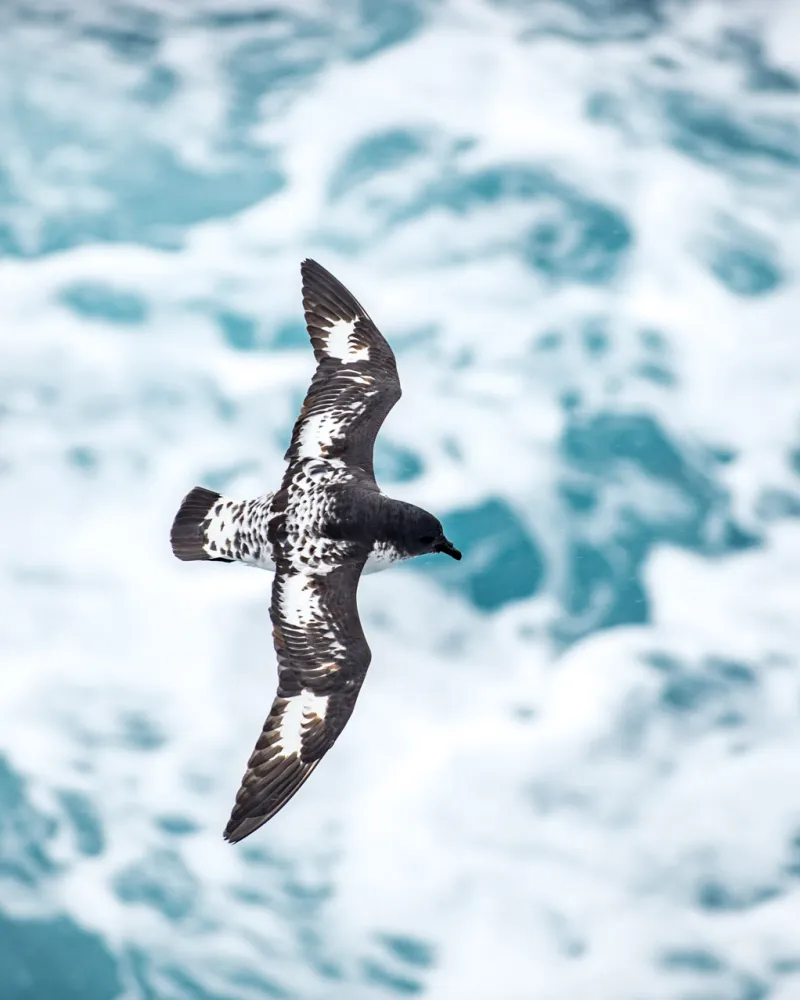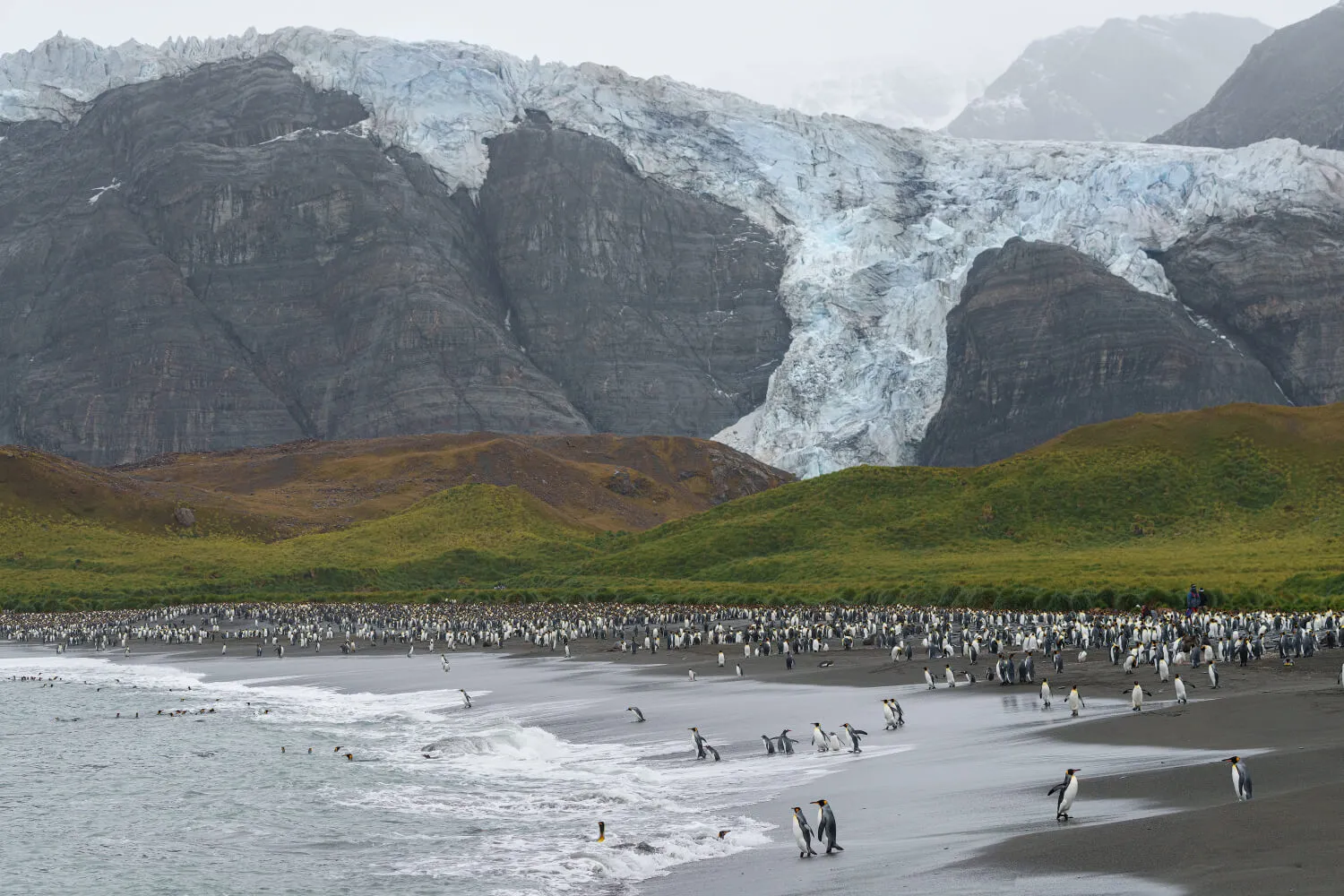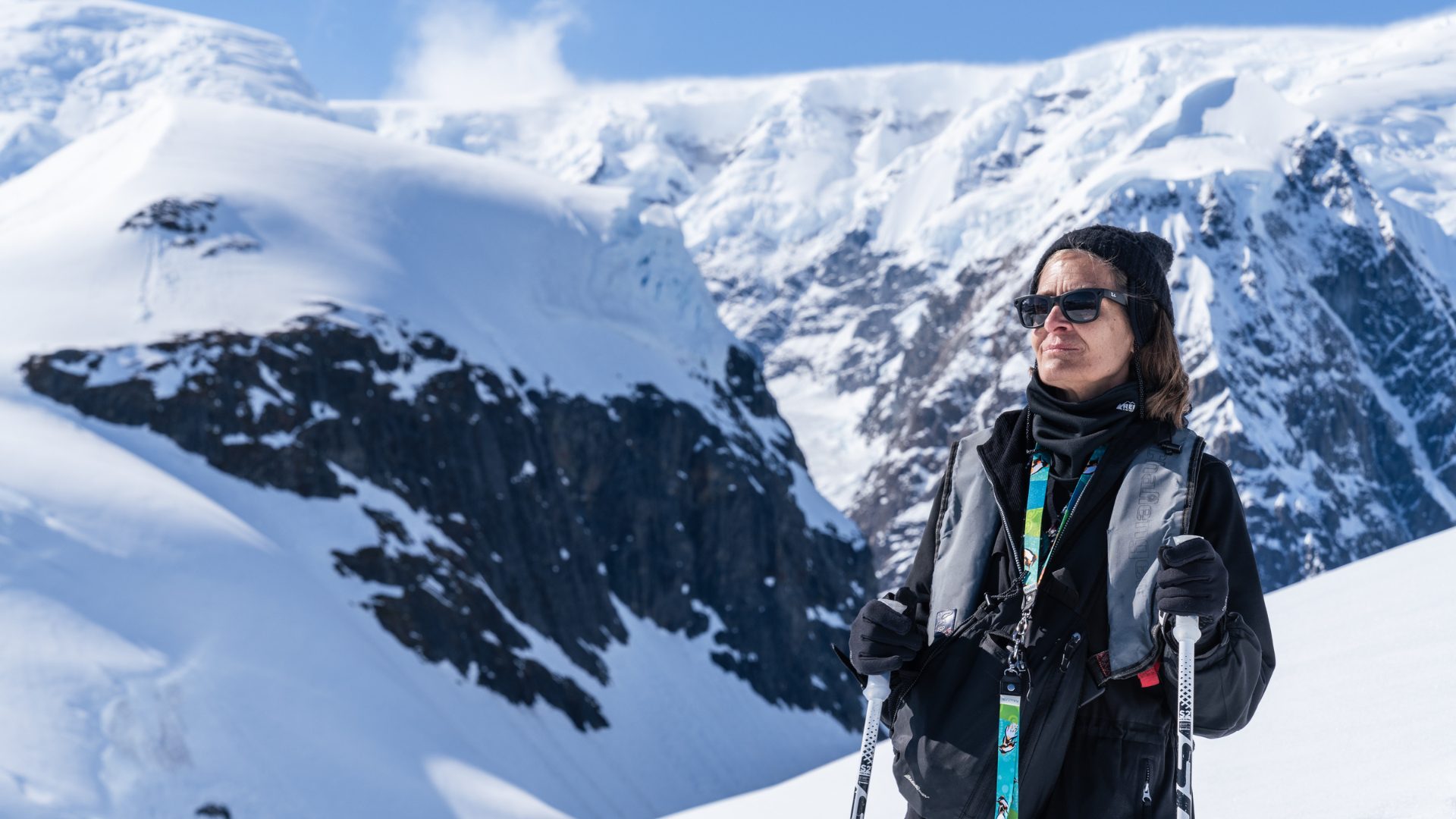%201.webp)
Discover the Seventh Continent
The Origins of Antarctica
We explore all facets of this wild continent during an Antarctica expedition – from origins to the present day. About 250 million years ago, Antarctica was in the subtropical band of the planet, covered with abundant forests and inhabited by reptiles and amphibians. It was part of the supercontinent of Gondwana. Subsequently, it permanently separated 65 million years ago and began to drift towards the South Pole. Following its gradual cooling, ice formed, making it the world’s most extreme and inaccessible land.
The Antarctic ecosystem results from prolonged and complex evolutionary processes where we see life forms adapt to the extreme polar environment. As a result, it produced a system composed of a limited number of species that depend directly on each other and the habitat in which they live. Notably, there are various penguins, whales, seals, and seabirds in the Antarctic ecosystem.
On the continent, there are five species of penguins: the Adelie, Chinstrap, Emperor, Gentoo, and the Macaroni penguins. Penguins in Antarctica typically have a diet of squid, fish, and crustaceans.
Thanks to their warm blubbery bodies and fantastic swimmers, seals are perfectly adapted for life in the Antarctic ecosystem. There are up to four species of seals that you could see on your visit: the Elephant, Leopard, Crabeater, and the Weddell seals.
Additionally, during your Antarctica expedition, you could see several species of seabirds, including Albatross, Blue-Eyed Shag, Snowy Sheathbill, and more. The Antarctic seas have seasonal visitors. Alongside many others, the three species of whales most frequently sighted in Antarctica every year are Orca, Humpback, and Minke whales.
Today, the Antarctic continent, without a doubt, is the most mysterious place on the planet. Its permanent ice sheet covering and almost wholly hiding its topography. In addition to being an ecological wonder, it has bewitched explorers, scientists, and voyagers alike for centuries.

Destination Highlights
Wildlife Encounters
Discover among most resilient species on the planet.
Breathtaking Landscapes
Antarctic landscapes are like no other places on Earth.
Intimate Connection
Incredible adventure activities for an intimate connection with nature.
Did you know?
Discovery
The Greeks guessed Antarctica's existence in 400 B.C.; explorers mapped it over centuries.
Wildlife in Antarctica
Penguins are the heart of Antarctica’s wildlife, each species showcasing remarkable adaptations to the icy environment.



With their majestic presence, whales grace the Antarctic waters as they navigating icy seas in search of krill.



Seals are masters of survival in Antarctica, thriving in frozen waters and on floating ice with their unique adaptations.
.avif)
.avif)

.avif)
Seabirds bring life to the Antarctic skies.







Sites of interest


.webp)






Upcoming Departures to Antarctica

Experience the Extraordinary
From dramatic landscapes to close wildlife encounters, every journey to the White Continent is unique. Let's start planning yours together.











.webp)








.avif)




.avif)
.avif)
.avif)
_Christian%20Cabanillas.JPG%20(1).webp)
.webp)
.webp)
.webp)
.webp)




%2010.17.04%E2%80%AFa.m..png)





.jpg)
.jpg)
.png)
_INT0171%20(2).jpg)

